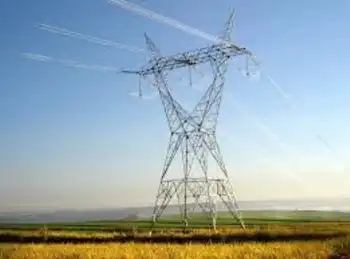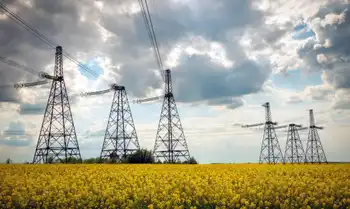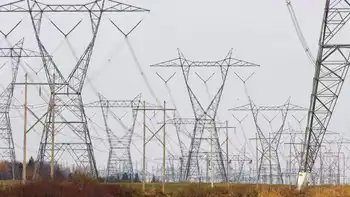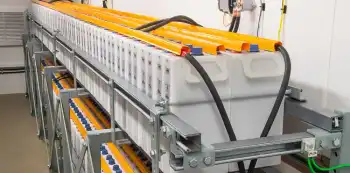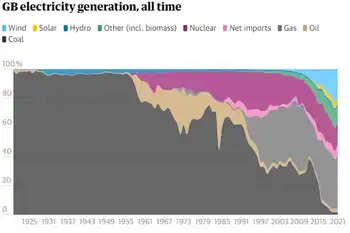Smart grid not clever enough to avoid recession
By Marketwire
NFPA 70b Training - Electrical Maintenance
Our customized live online or in‑person group training can be delivered to your staff at your location.

- Live Online
- 12 hours Instructor-led
- Group Training Available
After Congress approved $30 billion for the electric grid, advanced battery manufacturing and energy efficiency projects, much of the money included in the $787 billion economic stimulus bill signed into law on February 18 remains unused.
As utility companies prepare for the peak summer season of 2009, new efforts to update the power grid remain in limbo in the face of a new regulatory landscape and other changes affecting long-term plans for the electric generation and transmission business.
Wall Street hasn't been exactly cheering either, with power companies lagging the broader stock market by a big margin. But the smaller, more nimble companies tapping new technology to wring higher performance out of an aging power grid have fared far better.
"It's all very convoluted on how it'll all work," said Justin McCann, analyst with S&P Equity Research. So far, the government has pledged loan guarantees and tax credits for projects, but concrete progress remains vague.
Before diving into the new federal subsidy programs, experts point out that the industry is still waiting for rules on loan guarantees from the Department of Energy. Utility firms welcome new federal tax credits, but are trying to clarify how they would affect existing tax breaks for depreciation and other expenses.
And in a sign that public policy can't always compensate for a slower economy, at least one turbine plant in the sector remains mostly idle — not immune from competition from abroad and a recession at home.
While the slow economy may take the sting out of spikes in demand in June, July, August and September, the nation's power system remains vulnerable to large-scale blackouts from monster hurricanes and other natural disasters.
Fresh regulations also loom in the power industry and elsewhere, as Congress and the Obama administration plan for a cap-and-trade system to reduce carbon dioxide emissions.
Instead of huge ramp-ups in spending, McCann said, utility giants such as Exelon (EXC), FPL Group (FPL) and Southern Co. (SO) have been working on big infrastructure projects already in progress and deferring others until credit markets improve.
With the business in flux for the power grid, Exelon CEO John Rowe said in a speech that "there is no grand structure for the electricity business that is completely accepted" nowadays.
"What's a smart grid, does anyone know? And of course the answer is, everybody has their own definition of the smart grid," he said.
Some think it's new power lines to carry wind power from the Dakotas to the Midwest, or from West Texas to Houston, or smart meters to improve efficiency, he said. The goal would be to transform the current patchwork of aging cable and technology into a "self healing system" that increases reliability, he said.
"It can be all of the above, but whichever you choose, it's expensive," Rowe said at the Sanford C. Bernstein & Co. Strategic Decisions Conference.
While talk of new transmission lines remains front and center in the debate, communities aren't exactly lining up to volunteer for new 200-foot transmission towers in their collective back yard, either.
Earlier this months, Edison International (EIX) scrapped plans for a 50-mile power line right-of-way in Arizona, after objections from state officials. The owner of Southern California Edison hopes to move ahead with plans to connect Palm Springs, Calif. with generation facilities on the books near Blythe, Calif.
American Electric Power (AEP), the transmission line specialist in the U.S., continues to grapple with regulatory OKs for new conduits, even as Washington officials ponder proposals to increase the power of the Federal Energy Regulatory Commission to site power towers.
The smart-grid effort, as well the coming carbon dioxide legislation, cap off a tough year so far in the stock market for the 35 issues in the S&P utilities sector index.
The sector has been facing higher operating expenses, cash payments for pension plans, and tight capital markets, plus many investors maintain that improvements in the economy are more likely to benefit other sectors more.
Exelon currently leads the class as the bulkiest power company in the S&P 500 with a market cap of more than $31 billion. FPL Group holds the No. 2 position at $23 billion, followed by Southern Co. with $22 billion. Dominion Resources Inc. (D) comes next at about $19 billion, and Duke Energy (DUK) wraps up the top five at $18 billion.
Recent months have seen a shake-up among the top names in the business, with Constellation Energy (CEG) selling a big chunk of its nuclear business to Electricite de France and Exelon moving to buy NRG Energy (NRG) through a hostile offer to common shareholders.
Collectively, the largest publicly traded utility components of the S&P 500 are down 9.4% so far in 2009, compared with a gain of 0.8% for the S&P 500, as of close.
In year-to-date performance the S&P utilities sector index ranks last out of the 10 sub-sectors of the S&P, noted Howard Silverblatt of S&P.
While the big cap names struggle, some smaller-cap companies with ties to the smart grid and clean technology sector have rebounded this year.
Smart grid technology firm Comverge (COMV) have risen to above $9 a share from $5 a share earlier this year. EnerNoc (ENOC) has risen from below $10 to more than $22 now.
American Superconductor Corp. (AMSC) is also up handily for the year, along with Enersys (ENS). Echelon Corp. (ELON) has remained about flat this year. Itron (ITRI) is lower for the year and Esco Technologies (ESE) about flat.
General Cable Corp. (BGC) and Composite Technology (CPTC) are also seen as beneficiaries of grid spending.
While utility companies have already reported lower usage because of the recession, it's likely that demand for power will still increase during the usual summer surge.
In New York, for example, the operator of the state's power grid, NYISO, expects peak power usage to climb 3% from the year-ago period to 33,452 megawatts.
"Heat waves, causing increased power use by air conditioning and cooling systems, could produce peak loads this summer to rival those of recent years," said Stephen G. Whitley of the New York Independent System Operator.
Power grids remain vulnerable to a host of hazards posed by nature, from squirrels to rainstorms and even heavy tree growth.
Meanwhile, the industry is sifting through a host of new government incentives starting to kick in under the American Recovery and Investment Act.
The law earmarked $4.5 billion in matching grants for smart grid projects that help utilities and their customers to track and manage the flow of energy more effectively, curb peak demand, reduce blackouts, and integrate renewable energy and storage, including electric and plug-in hybrid vehicle batteries.
Another $32 billion has been set aside for grid improvements, including 3,000 miles of new and upgraded transmission lines.
Southern California Edison has laid out plans to spend $1.2 billion for smart meters, while Pacific Gas & Electric (PCG) plans to spend $1.7 billion through 2011 on new meters.
The cost to put a smart meter in every home in the United States has been estimated at $6 billion," SBI noted in a recent study. "However, unless smart meter costs fall substantially below $100 per meter, overall costs will likely exceed $15 billion if all 150-plus million electric meters in the United States are replaced with smart meters."
While some programs move ahead, some in the industry has yet to fully tap into the new incentive packages.
"More than 100 days have passed since the Recovery Act became law in mid-February, but U.S. power companies are still frustrated by the lack of clarity and the lack of guidelines needed to disperse some of those funds," Platts analyst Peter Maloney said in a recent study. "There is only about $18 billion in direct spending allocations designated for power sector capital projects, but there is much more than that in the form of loan guarantees and tax incentives," Maloney said. "Unfortunately both the loan guarantee program and the tax incentives for power sector projects come with ties to past programs that complicate their successful implementation."





